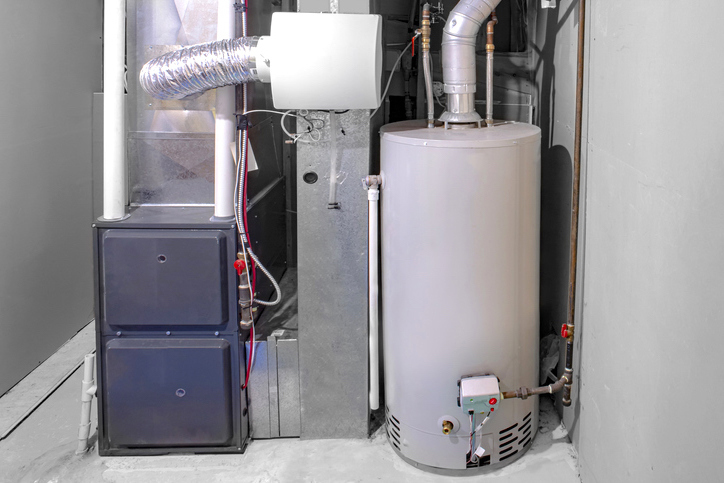Check In with Your Natural Gas Water Heater

When was the last time you did maintenance on your Georgia gas water heater? For many of us, the answer is: too long! Like all natural gas appliances, water heaters need regular work to last longer and operate efficiently. So, let’s cover natural gas water heater spring maintenance basics.
Draining and Flushing Your Hot Water Tank
A crucial element of natural gas water heater maintenance is draining and flushing the tank. Over time, sediment can build up in your tank, lowering efficiency and shortening the life of your water heater. Follow these easy basics steps to drain and flush your hot water tank.
- Turn off the water supply and switch gas to pilot or lowest possible setting.
- Attach a garden hose to the drain valve at the bottom of the tank then open the valve.
- Turn on a hot water tap on your main floor or upstairs to release suction in plumbing. Water will flow freely.
- After the tank drains, turn the water supply on and off to mix up sediment and wash it out . Repeat until water runs clear from the end of the hose.
- Close the drain valve.
- Turn on the water supply to fill the tank. Once there is a steady flow from the open hot water tap, you can turn it off.
- Turn gas valve back on.
- Remove garden hose and check drain valve for leaks. If you notice a leak, open and close the valve several times to rinse out any trapped sediment.
While this process is pretty straightforward, if you run into issues at any time, be sure to call a plumber. If you have any concerns about the natural gas line during maintenance, contact Atlanta Gas Light.
More Natural Gas Water Heater Maintenance
In addition to draining and flushing your tank, there are a few more boxes to tick for optimal natural gas water heater maintenance.
While your tank is empty, you want to check the anode rod. An anode rod in your tank attracts corrosive elements to protect your tank and pipes. This important element should be replaced every 3-5 years, but you can check it more frequently. The rod screws into the top of the tank and its hexagonal head is covered by a plastic cap. Remove the cap and unscrew the head to examine the rod. Be sure to use at least 1 inch deep socket wrench. It’s also a good idea to have a helper hold the tank steady while you unscrew the bolt. If the bolt seems stuck, use a length of steel pipe over the socket wrench handle for some extra leverage.
When you remove the rod, check over its condition. If it’s excessively corroded or has extreme build up, you should replace it.
Also check the temperature and pressure (T&P) relief valve. To do this, remove the drainage pipe from the T&P valve and place a bucket under the valve. Open the valve partway. There should be water, air, and steam released. If not, replace the valve right away or contact a professional.
Finally, check that the gas burner. Because the burner creates an up draft, dust and fine dirt get pulled towards it. So, be sure to clean any of that away. Lastly, make sure the burner has a nice, steady blue flame.
Water Heater Maintenance Saves Money!
According to the Department of Energy, water heating makes up about 18% of your energy use at home. That’s second only to space heating. Running your water heater efficiently adds up to monthly savings and can make your water heater last longer. If you are looking for more ways to save on energy at home, come find a cheap natural gas rate with us at https://www.georgiagassavings.com.
